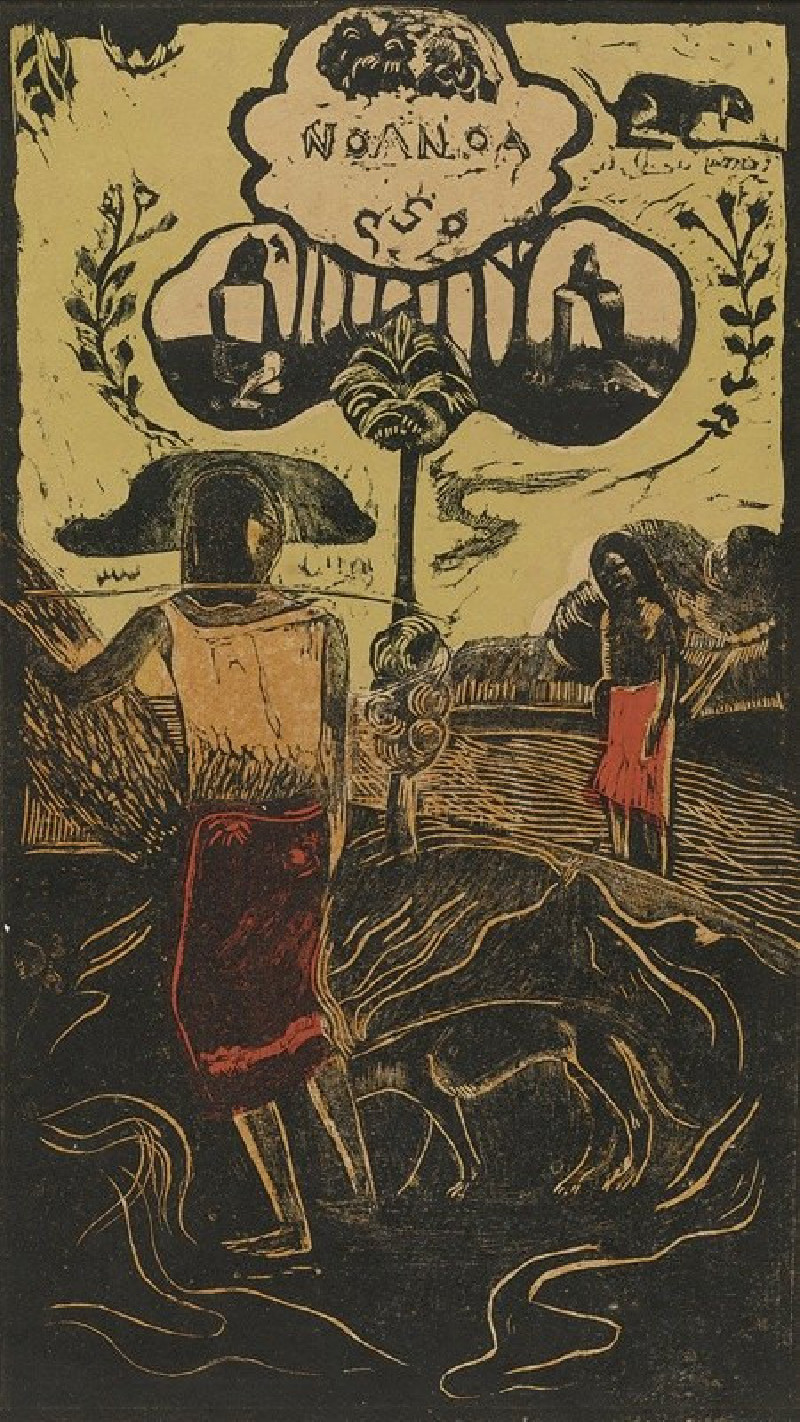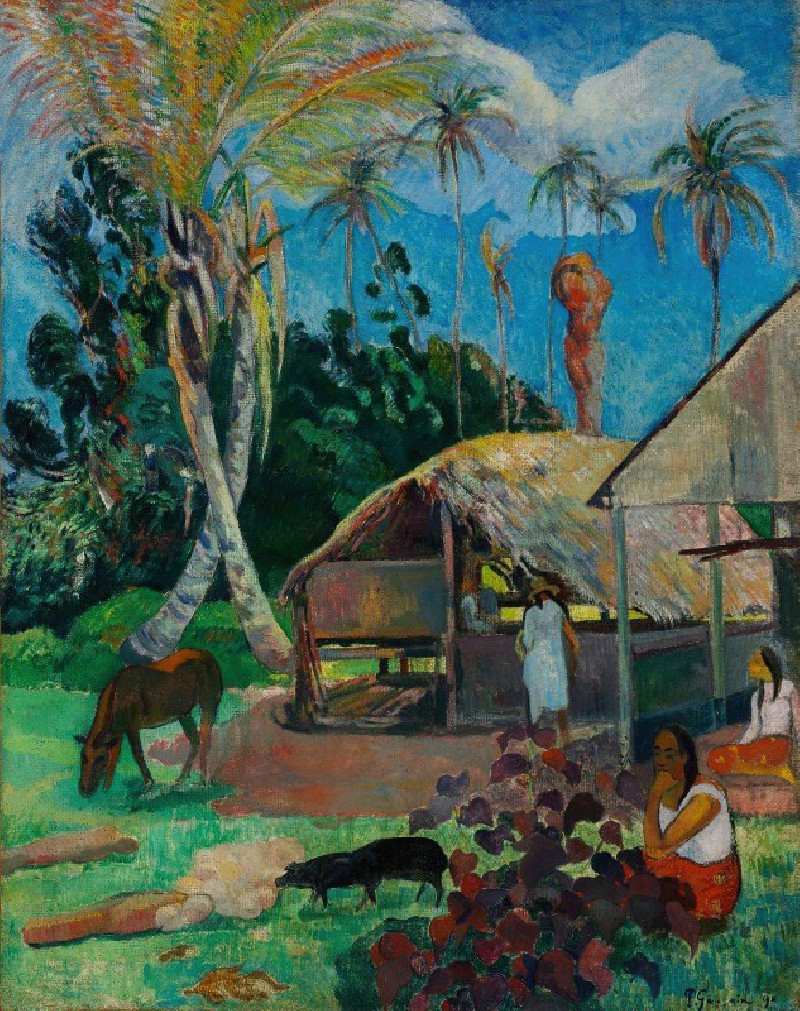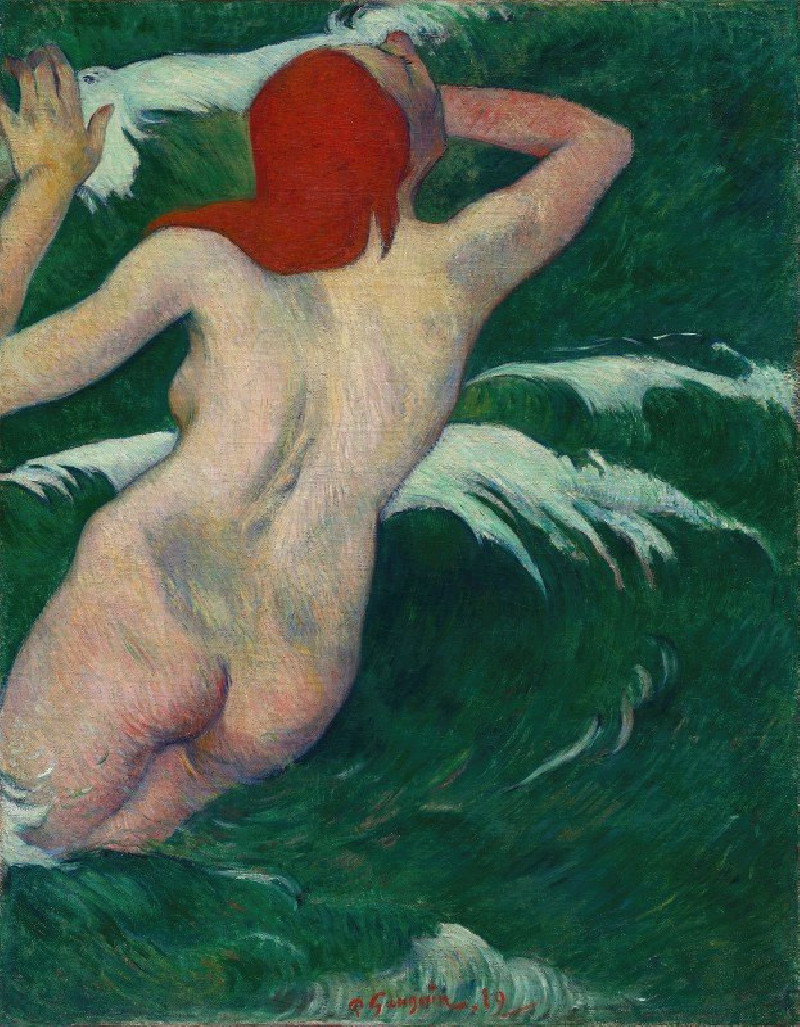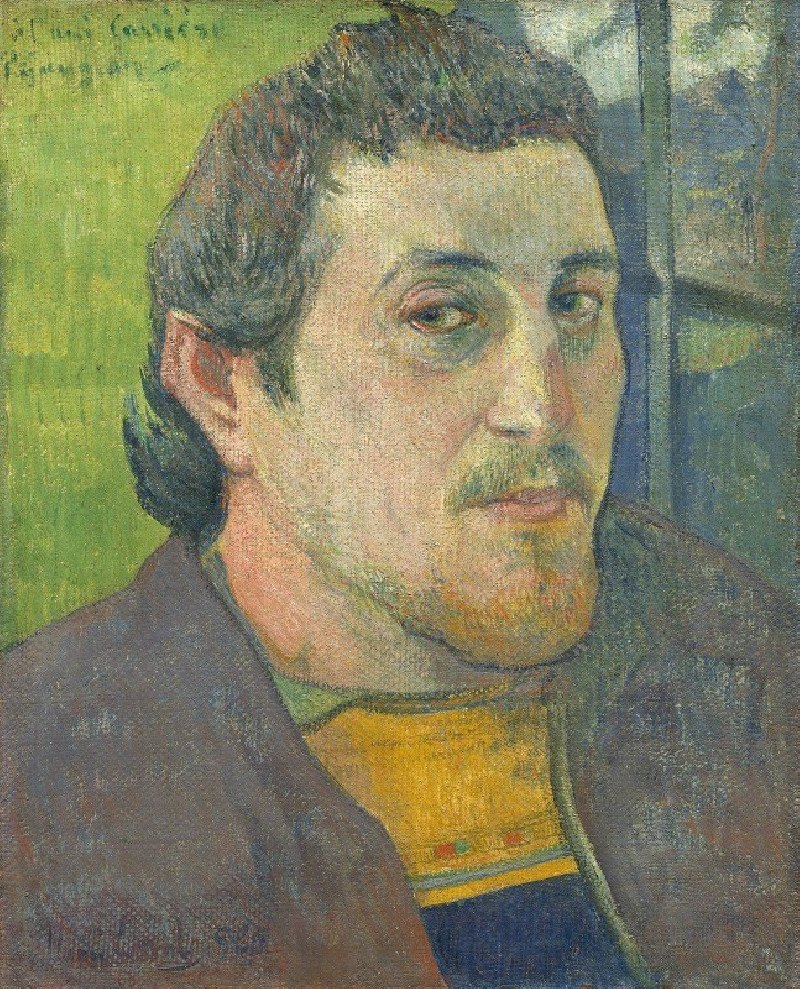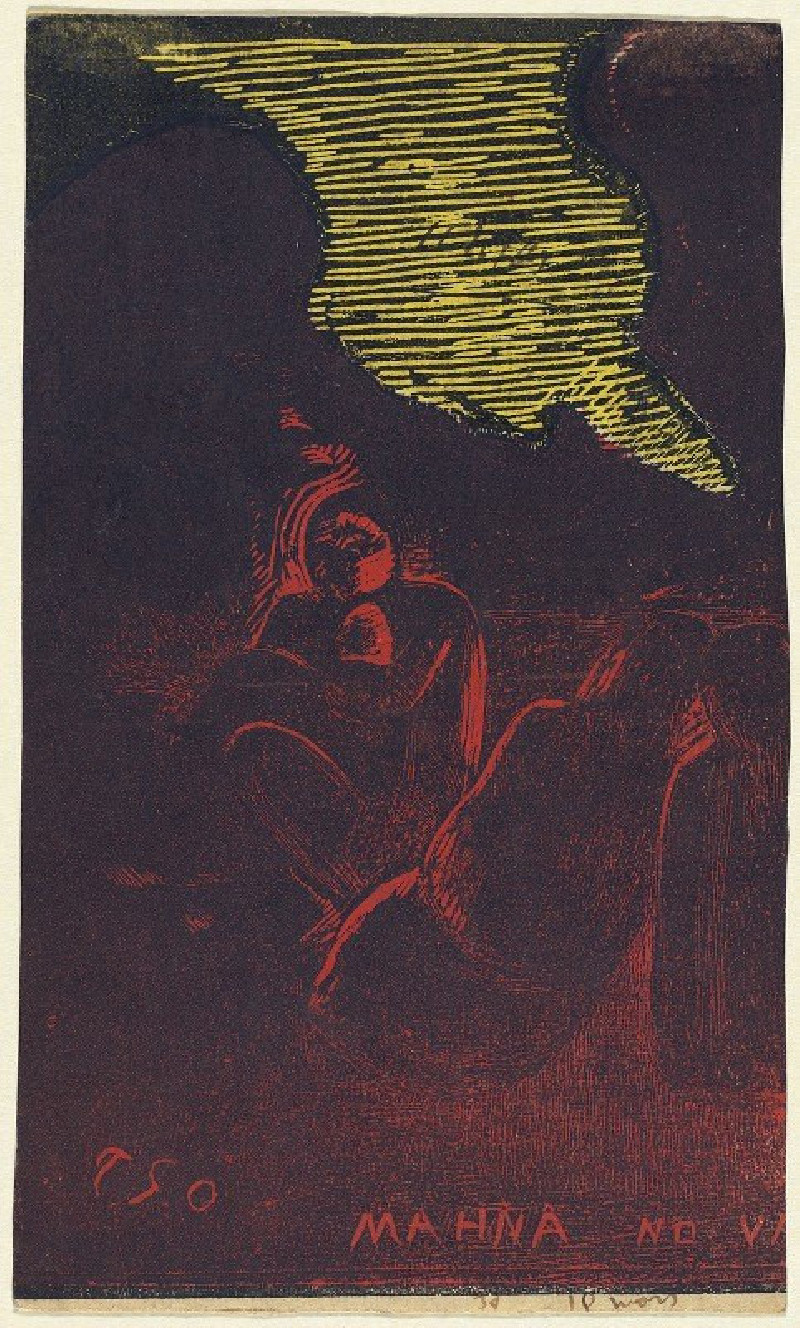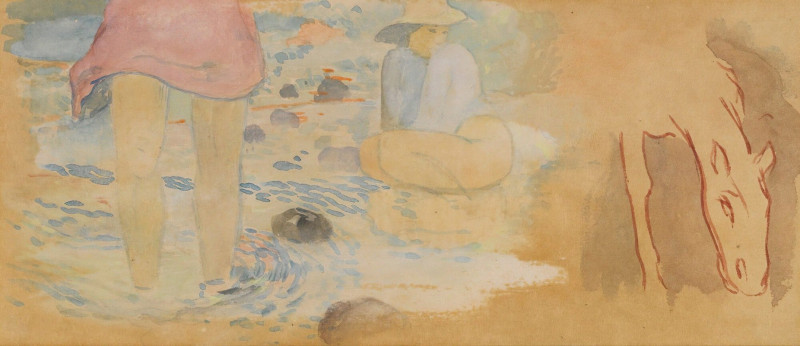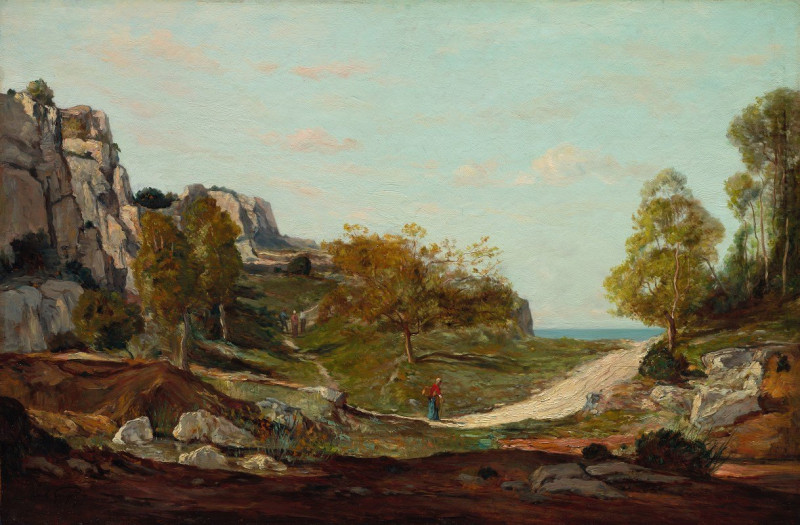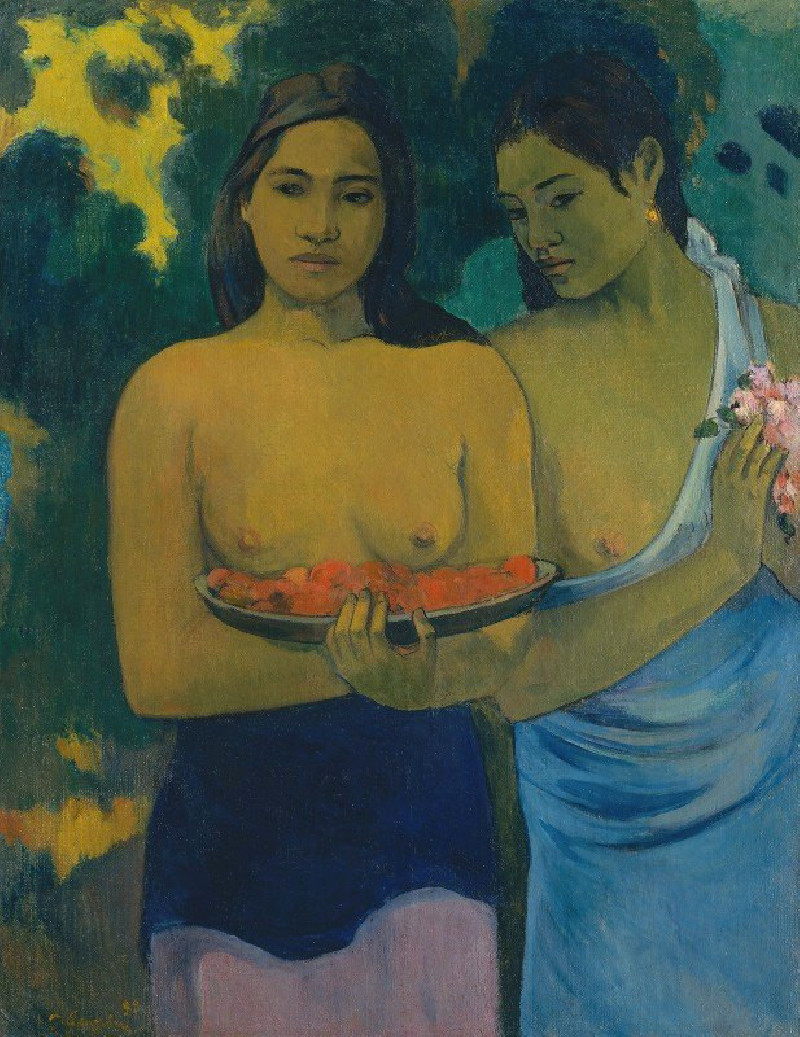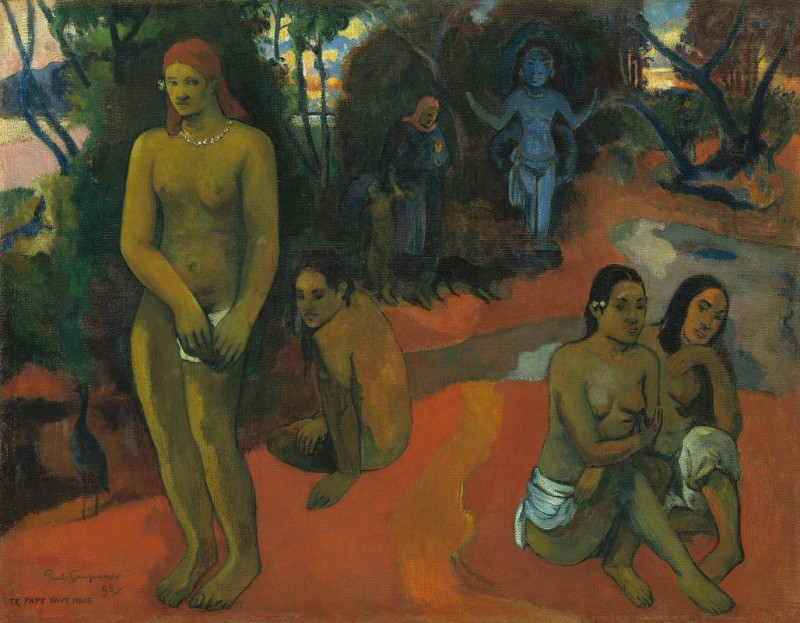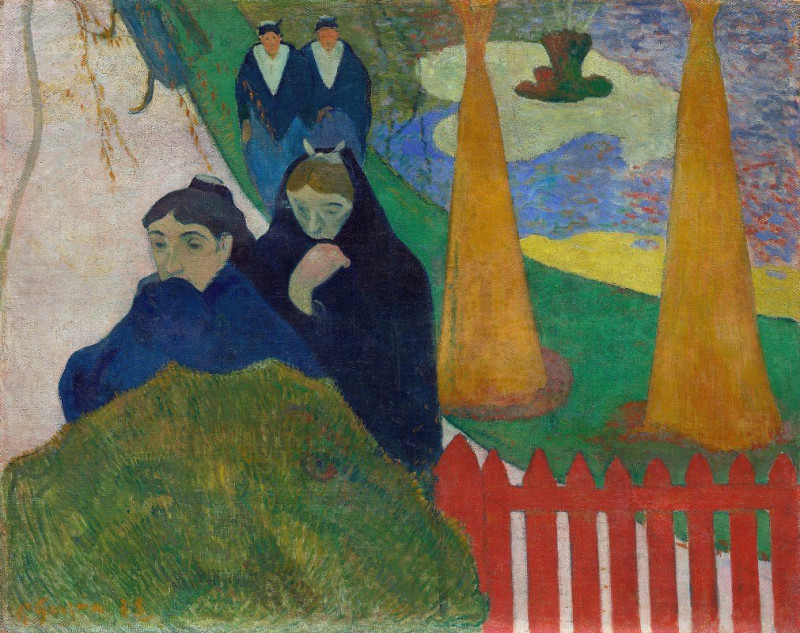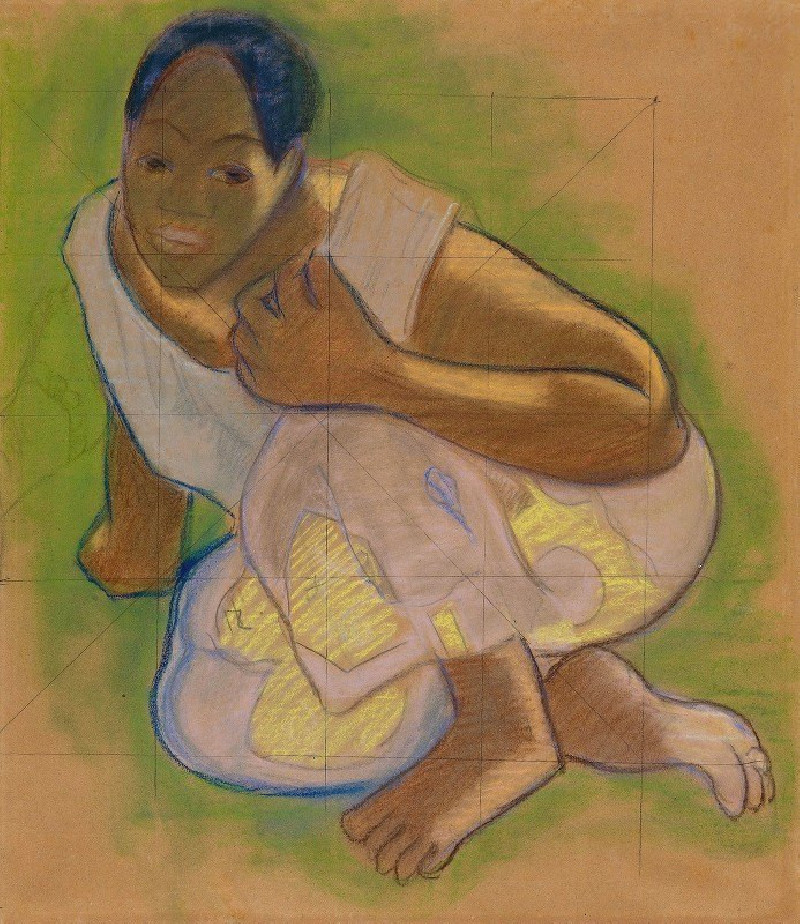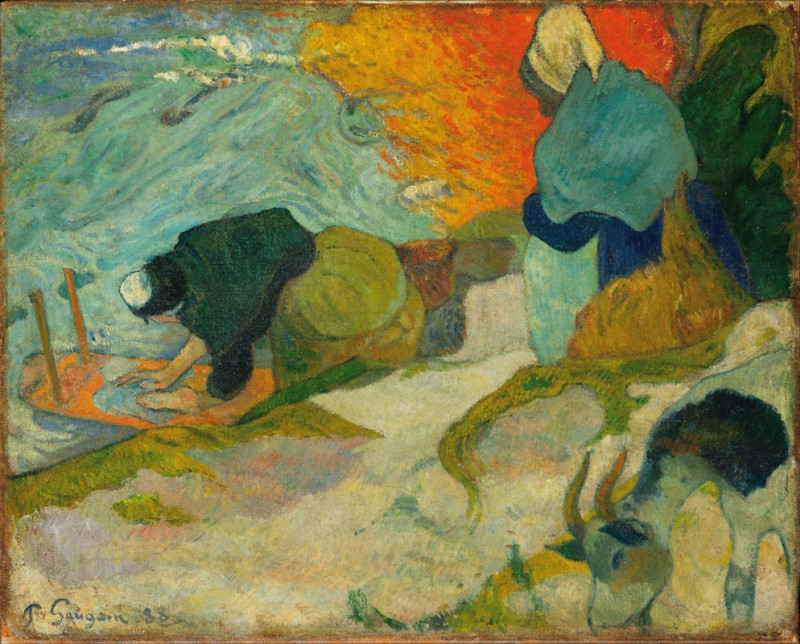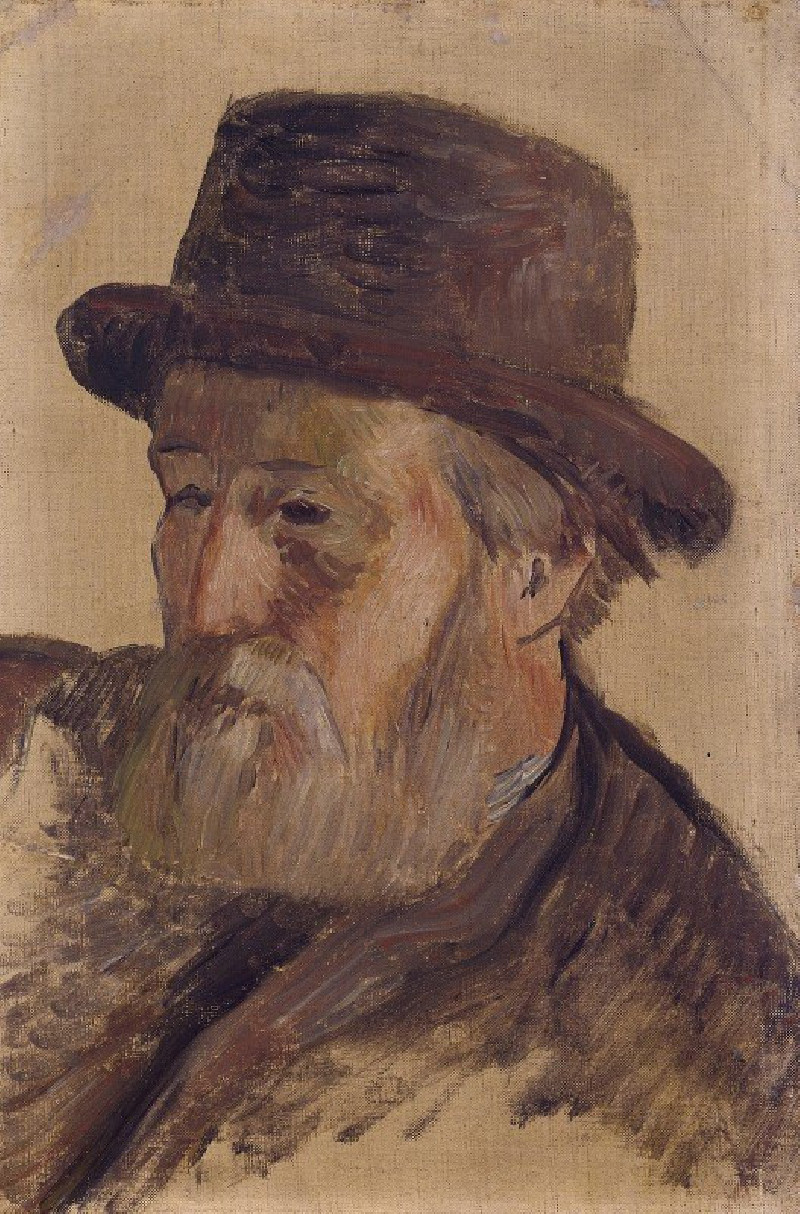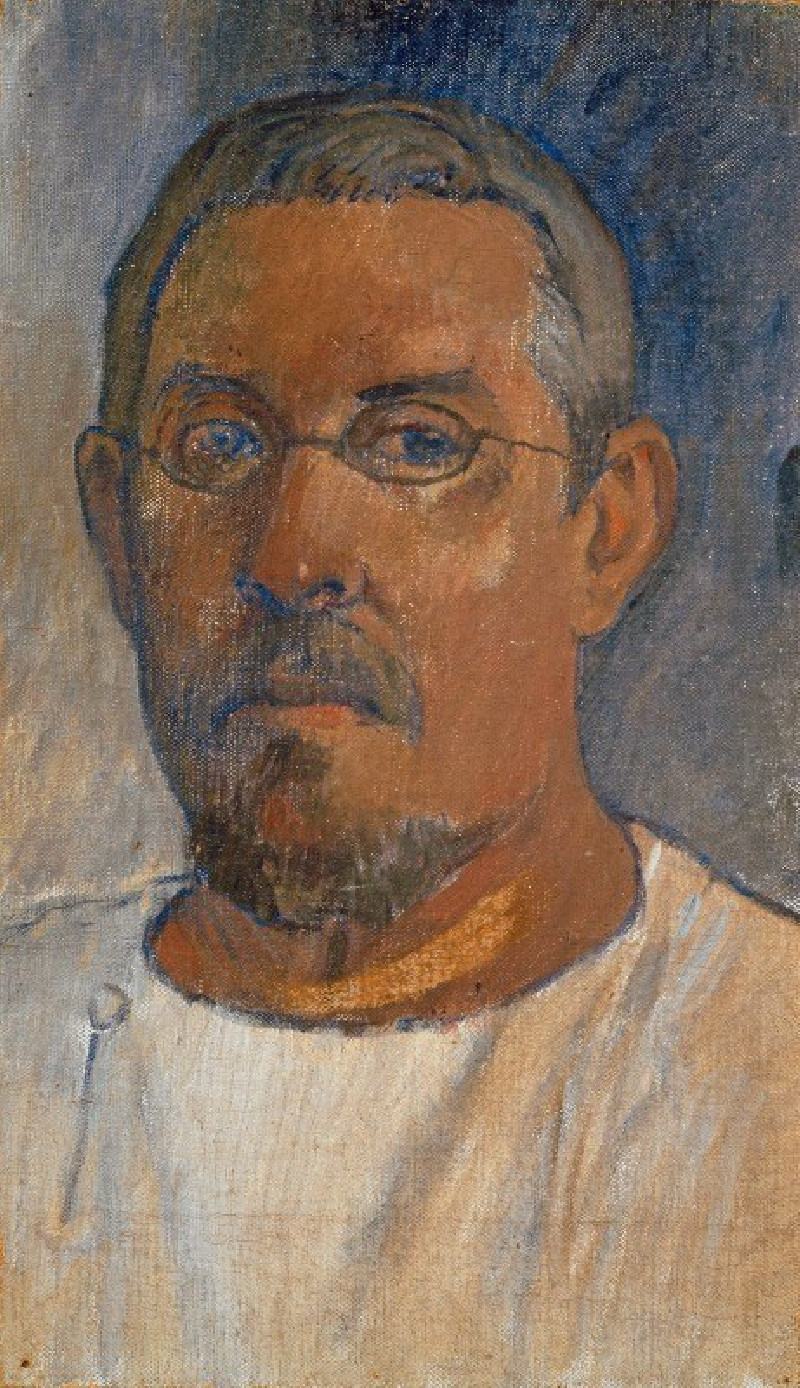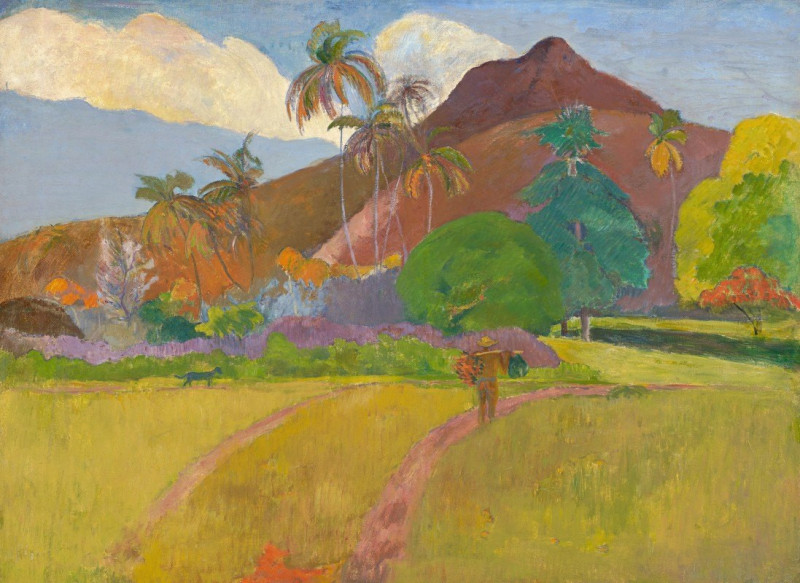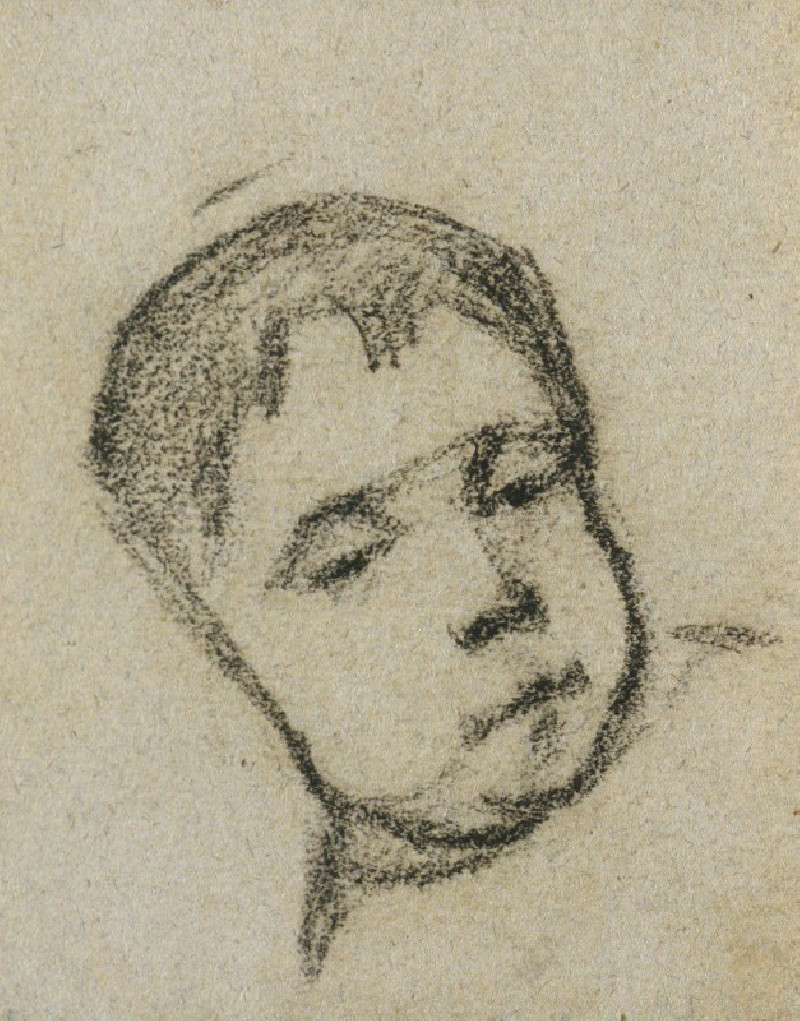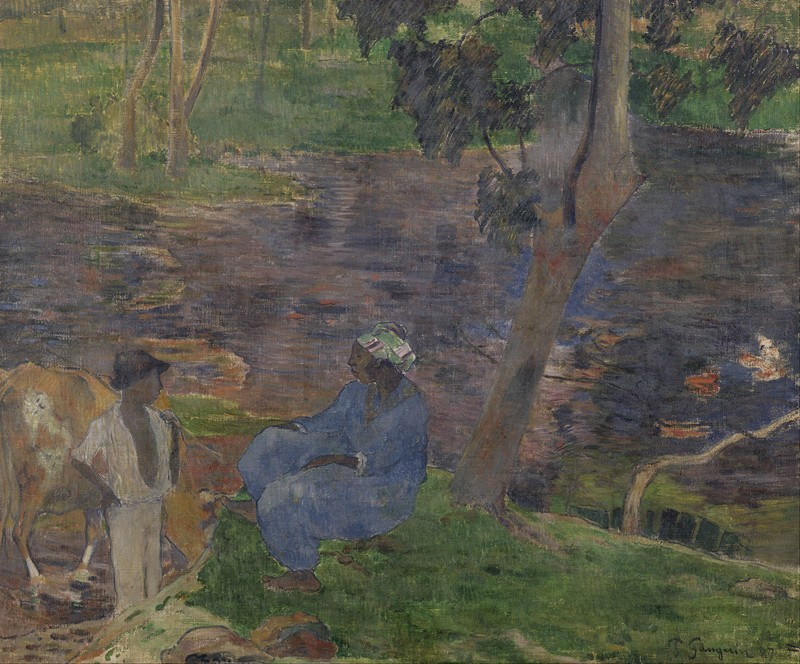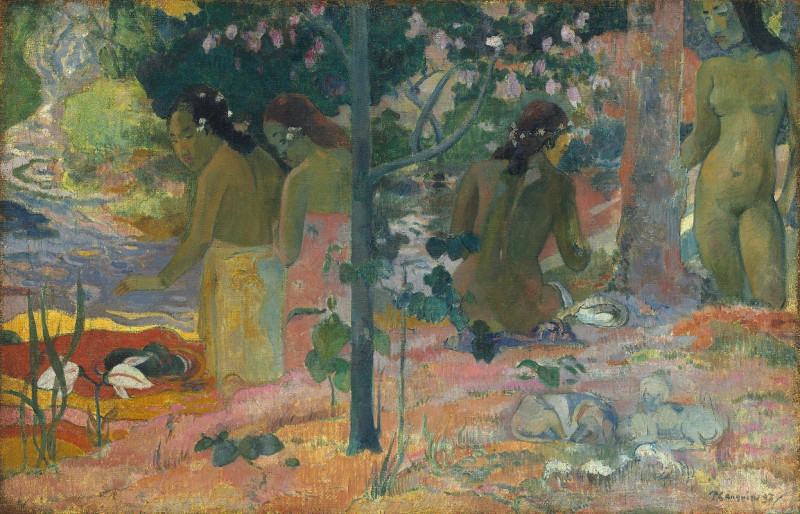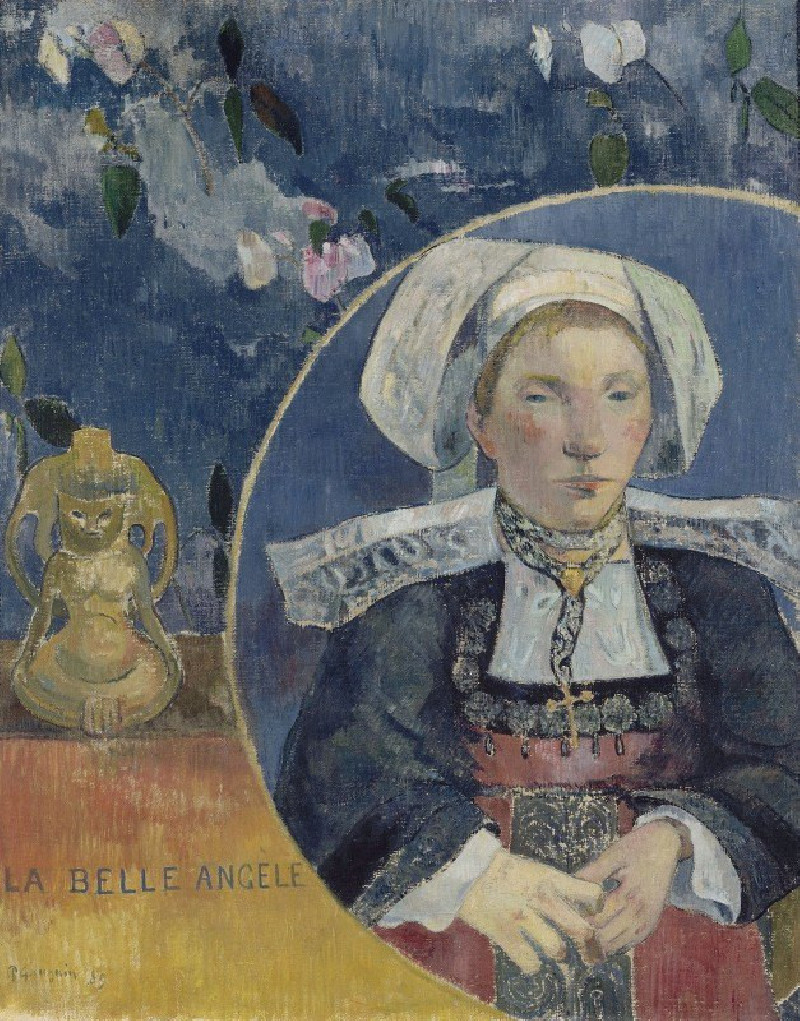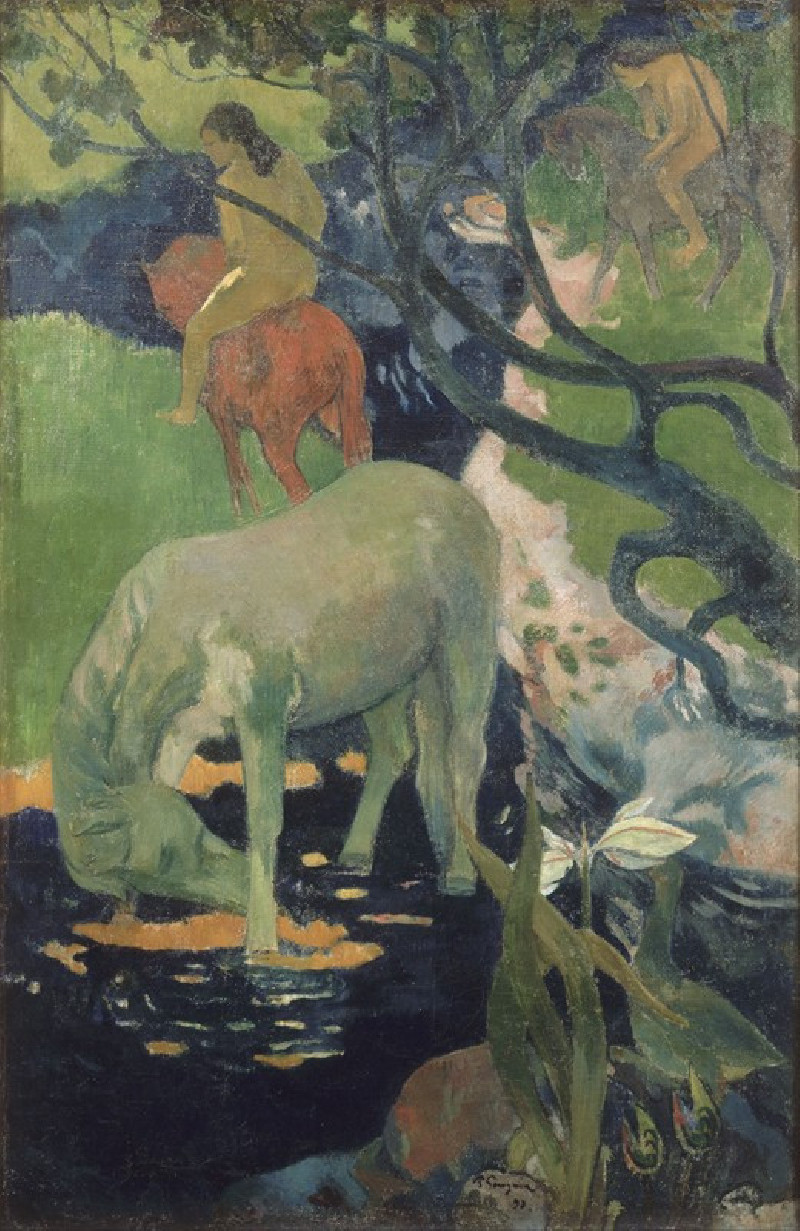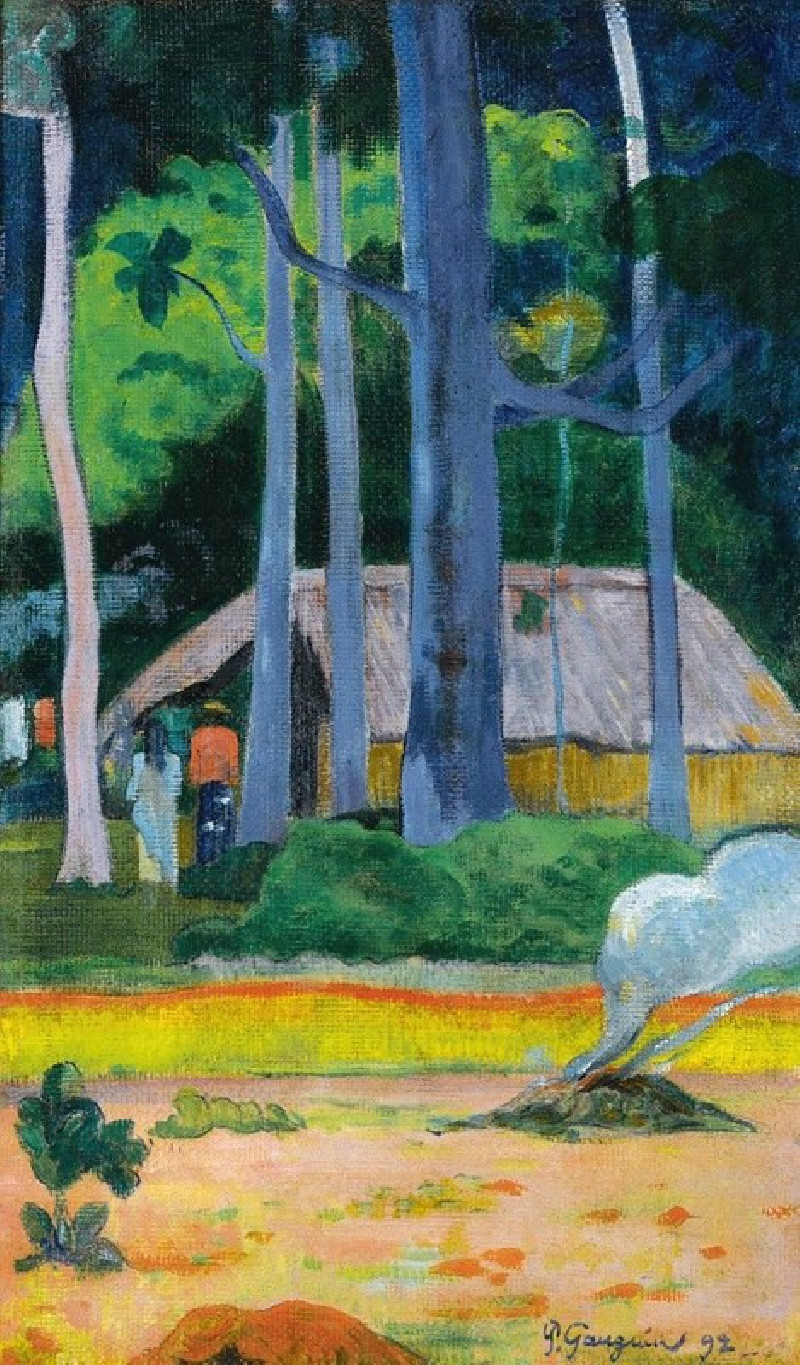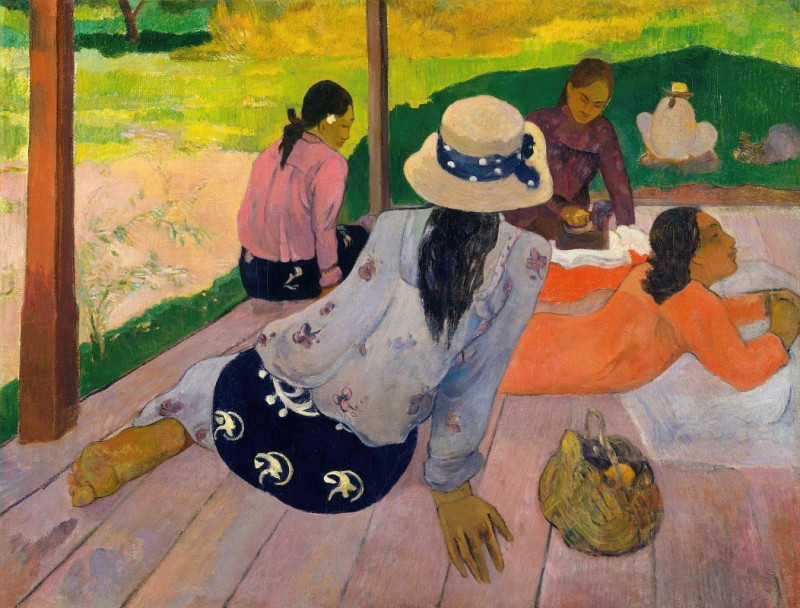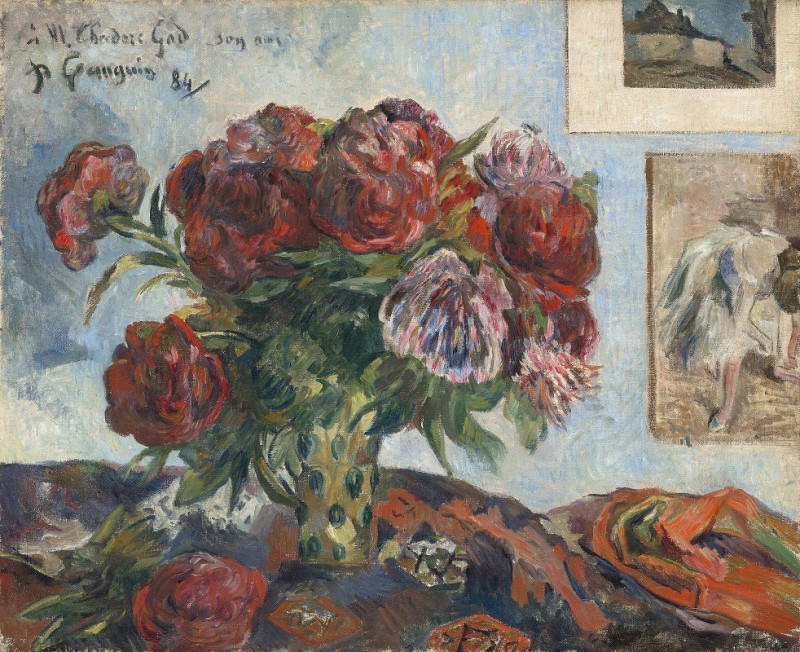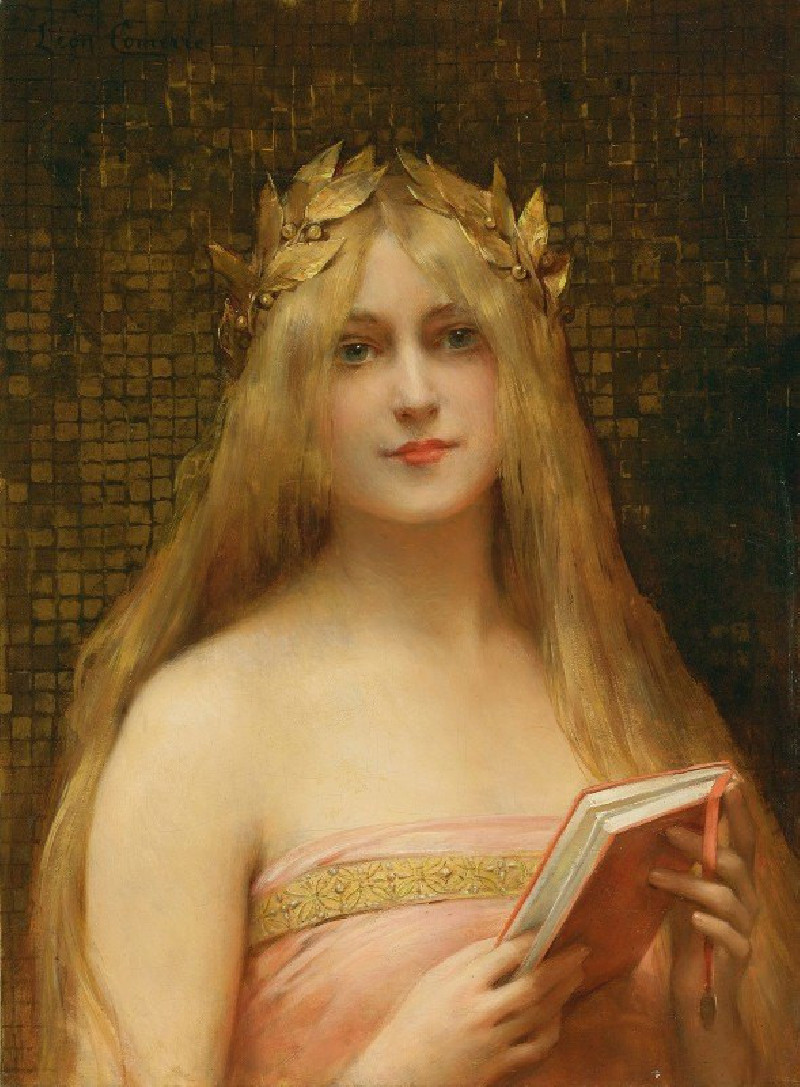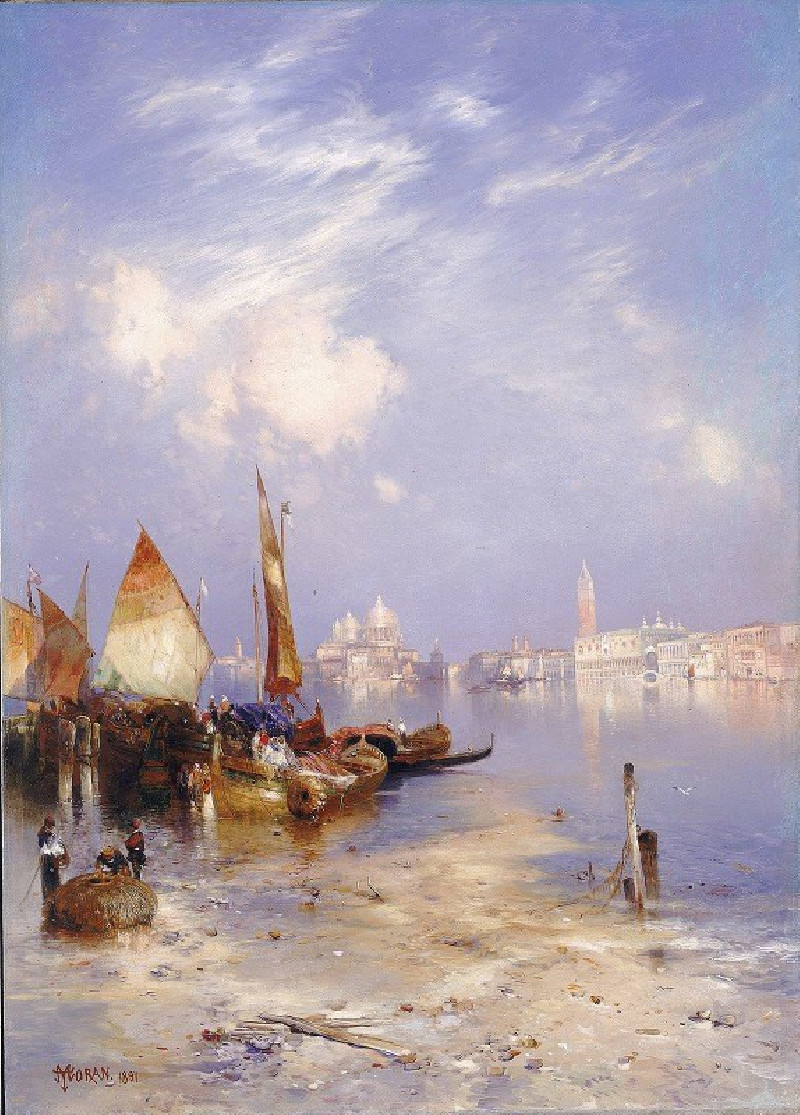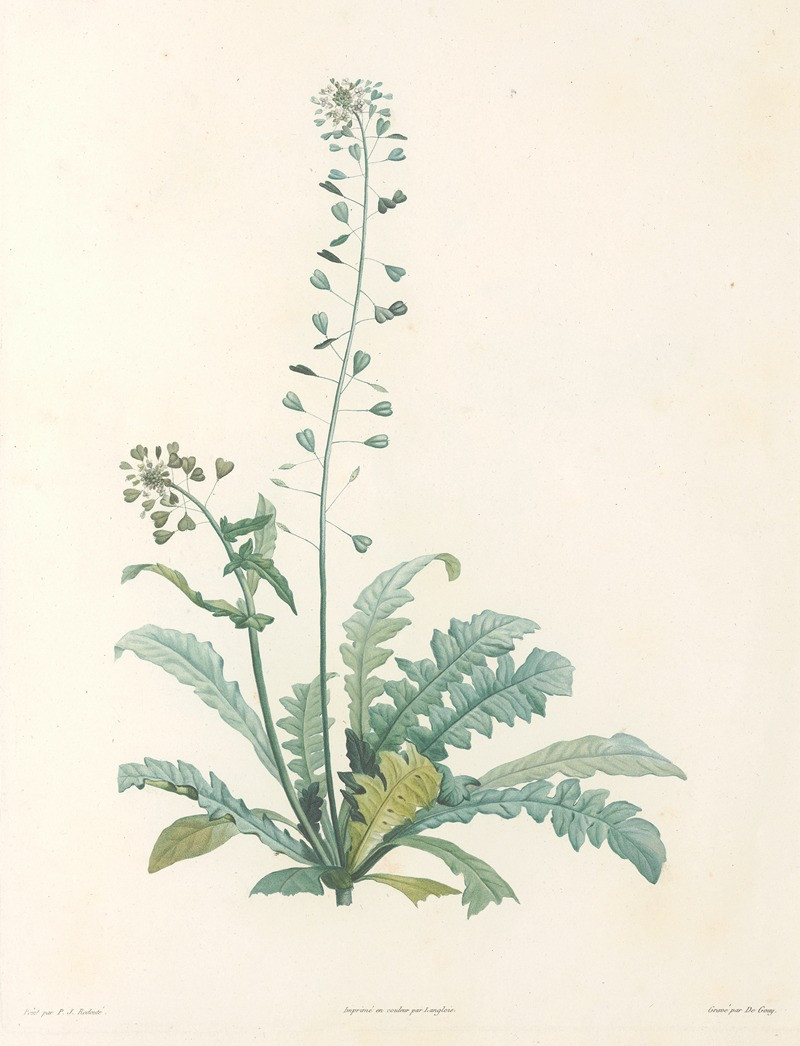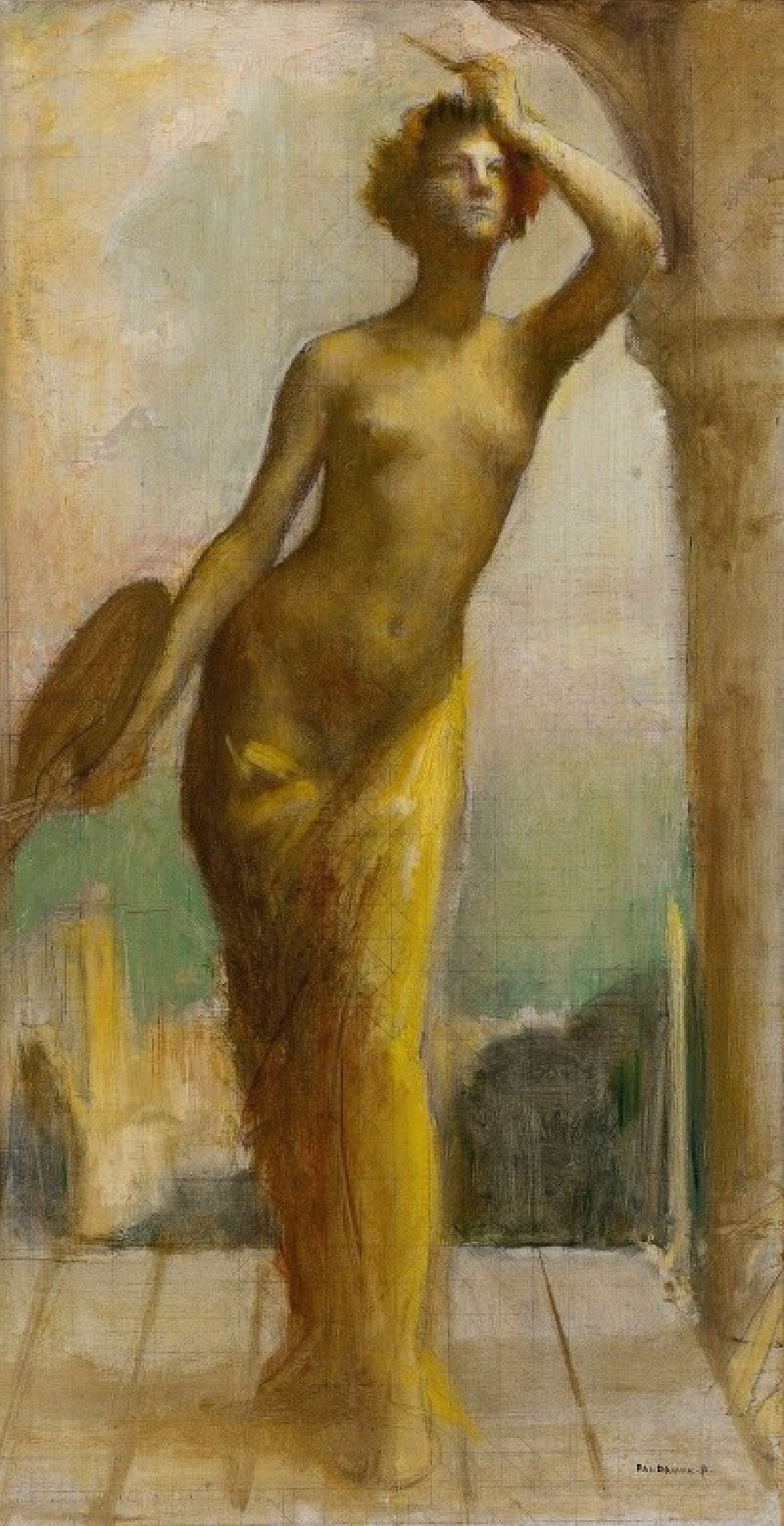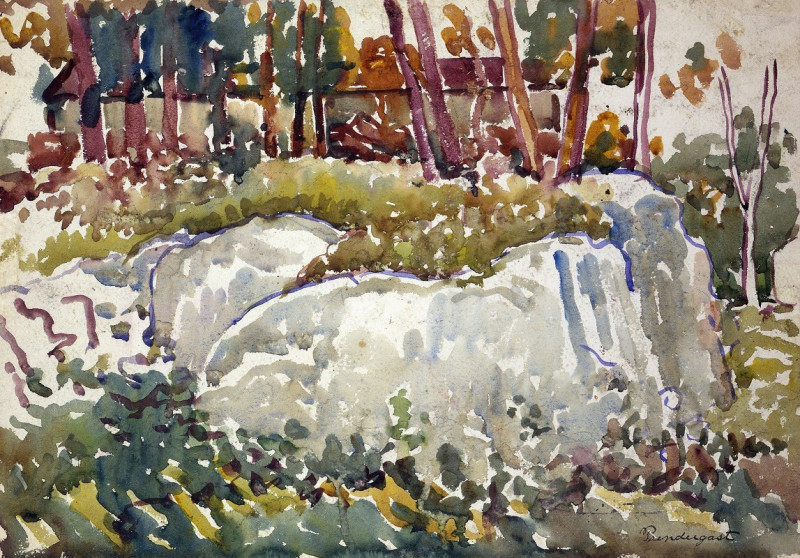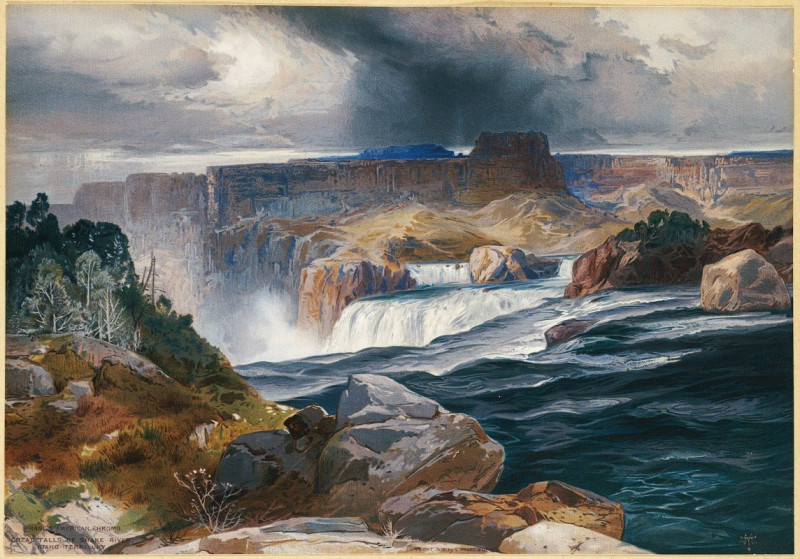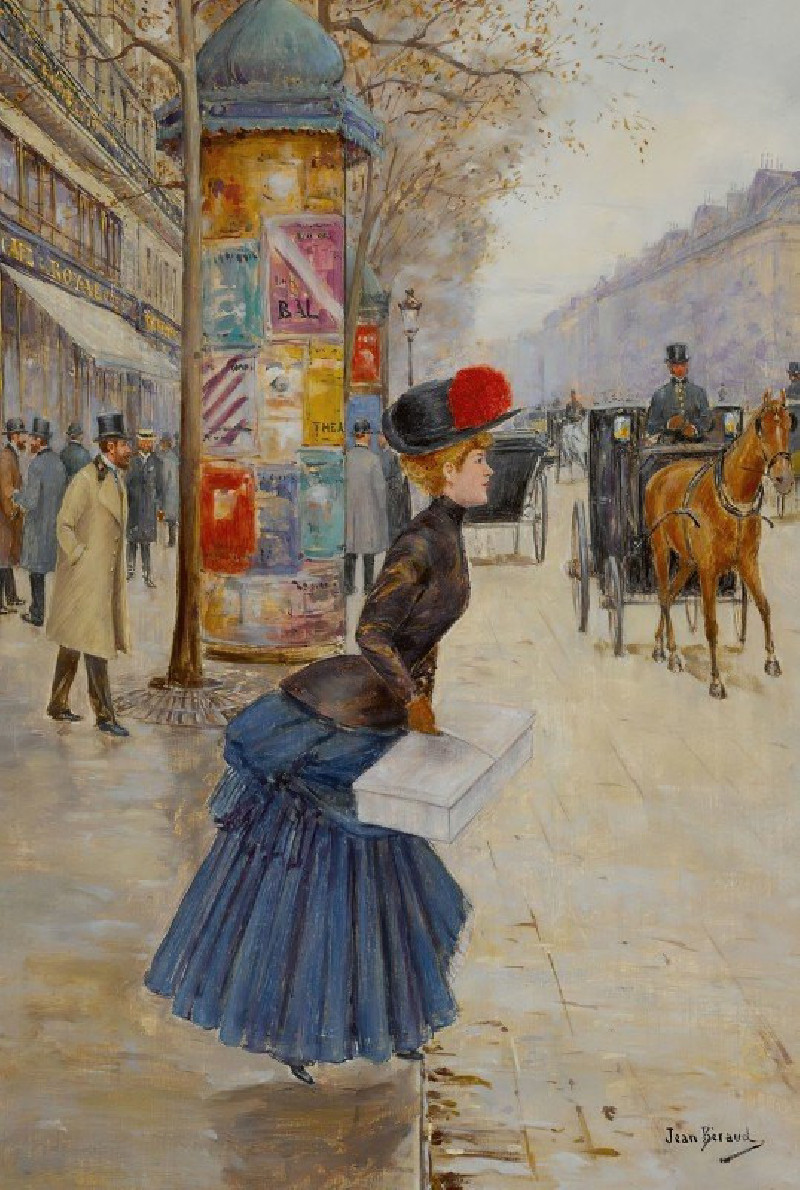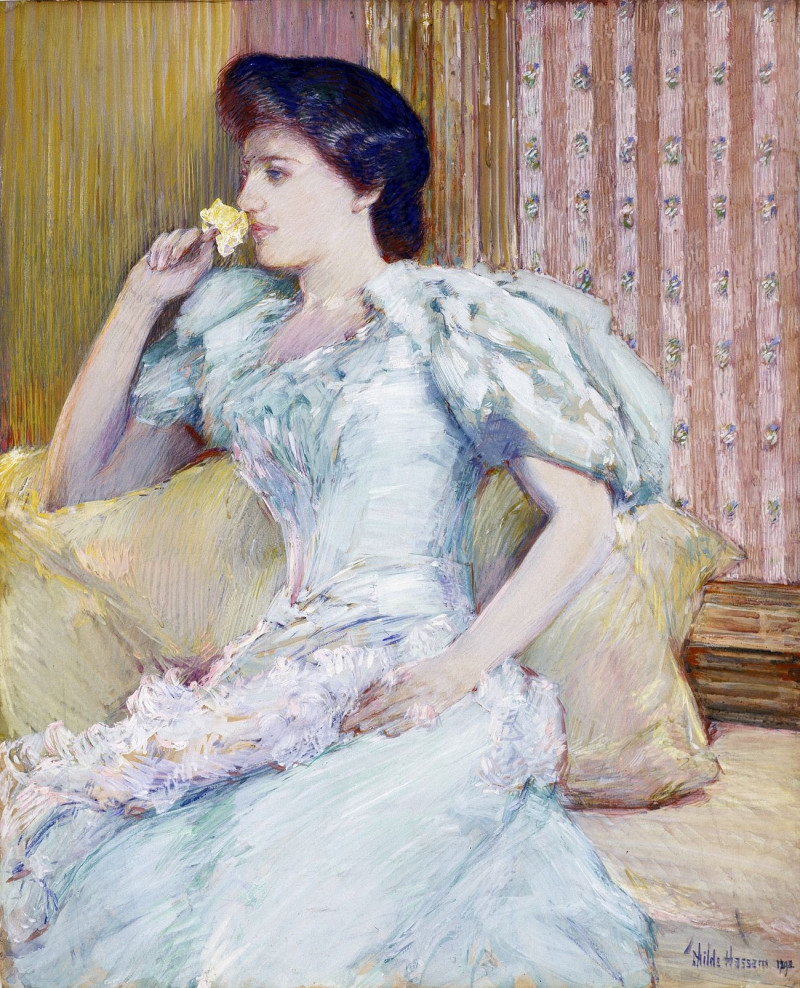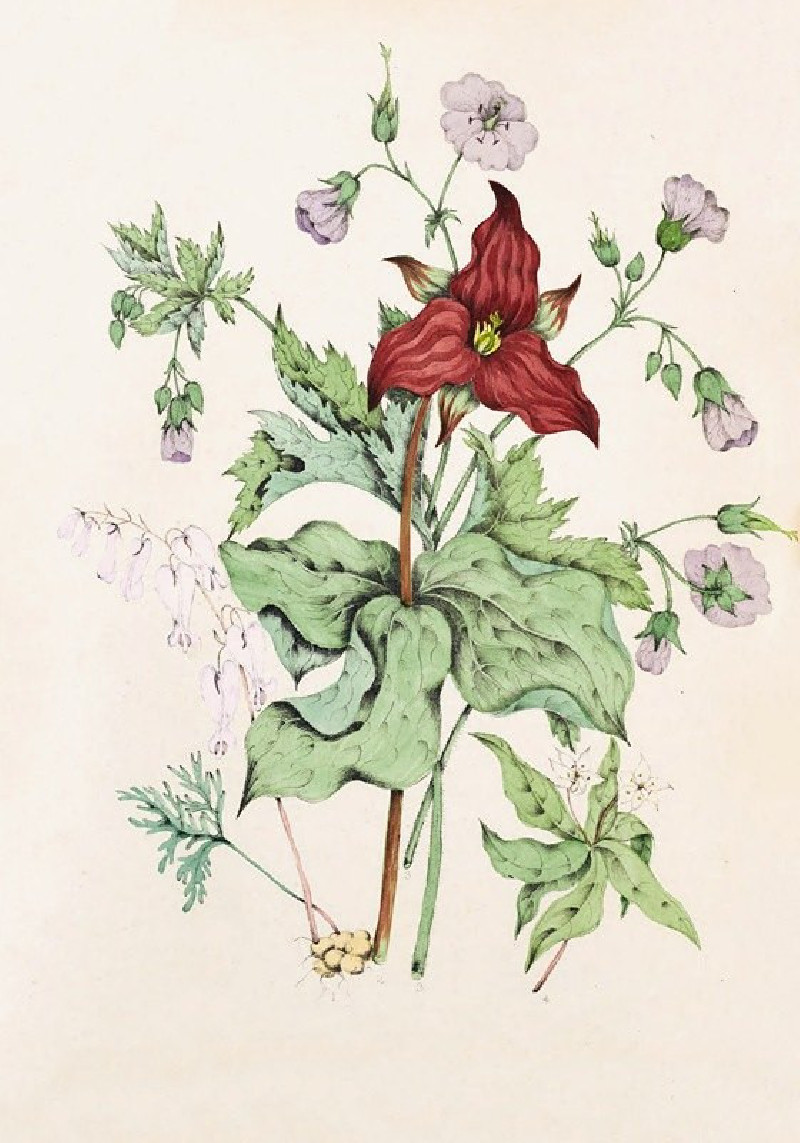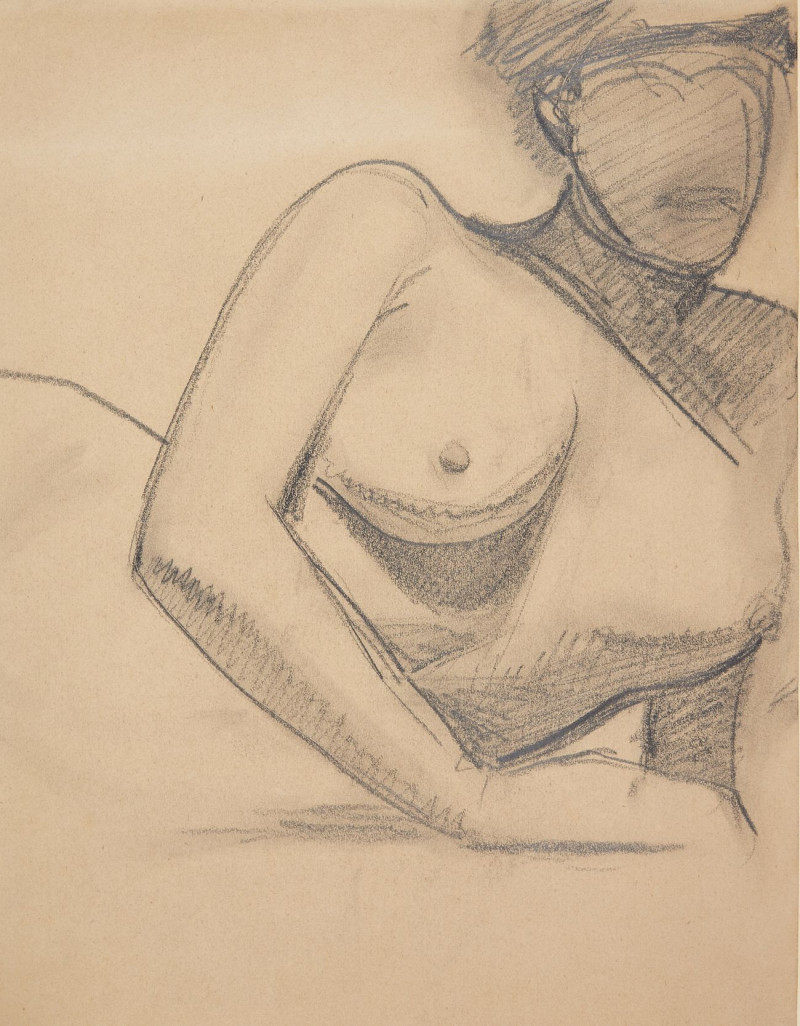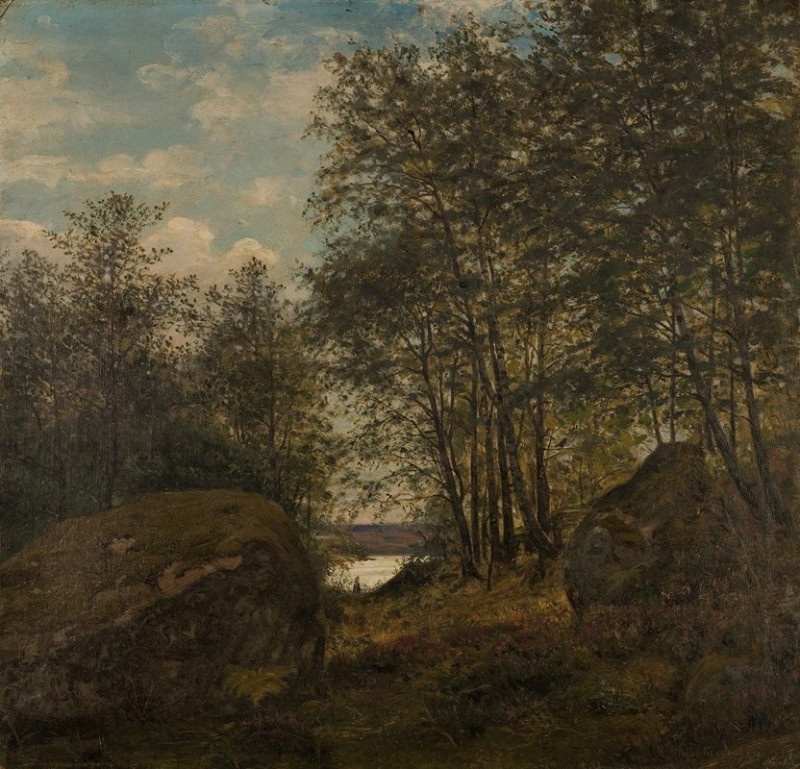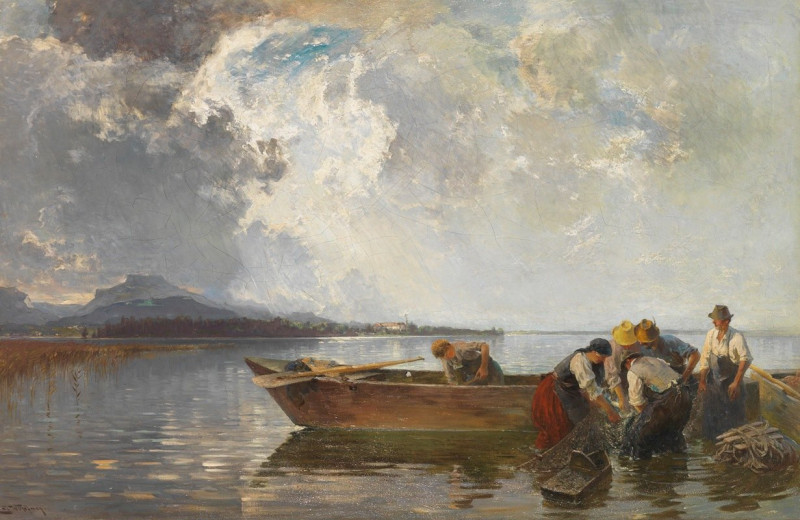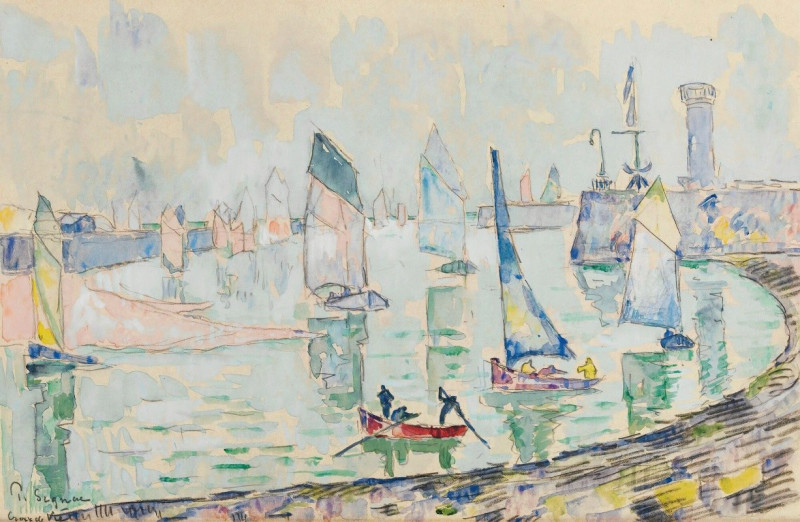Noa Noa (1894)
Technique: Giclée quality print
Recommended by our customers
More about this artwork
Paul Gauguin's enigmatic woodcut "Noa Noa" offers a window into the artist's perception of Tahiti, a place he famously escaped to, leaving behind Western civilization in search of unspoiled beauty and a new way of life. The title "Noa Noa," translating to "fragrant," evokes the sensual allure of the Tahitian landscape, which Gauguin found both intoxicating and inspirational.In this piece, Gauguin masterfully uses the woodcut technique to evoke a primal and mystical feeling. The central image features two figures, which starkly contrast against the richly textured background. The figure on the left stands facing away, engaged in some undetermined task, while the figure on the right, possibly a representation of a local Tahitian, is depicted in a profile view, emphasizing her traditional attire and the simplicity of the local lifestyle.Above them, a fantastical landscape contained within an elaborate cloud formation includes native huts, trees, and animals, symbolizing Gauguin's romantic view of Tahiti as an Edenic paradise. Gauguin’s use of bold lines and minimal color serves to highlight the raw and visceral qualities he perceived in Tahitian culture, which he felt was untainted by European influence.This work not only serves as an artistic expression of Gauguin's experiences and fantasies but also as a critical commentary on the effects of colonialism and the exoticism of non-Western cultures.
Delivery
Returns
Eugène Henri Paul Gauguin was a French Post-Impressionist artist. Unappreciated until after his death, Gauguin is now recognized for his experimental use of color and Synthetist style that were distinct from Impressionism. Toward the end of his life, he spent ten years in French Polynesia. The paintings from this time depict people or landscapes from that region.

